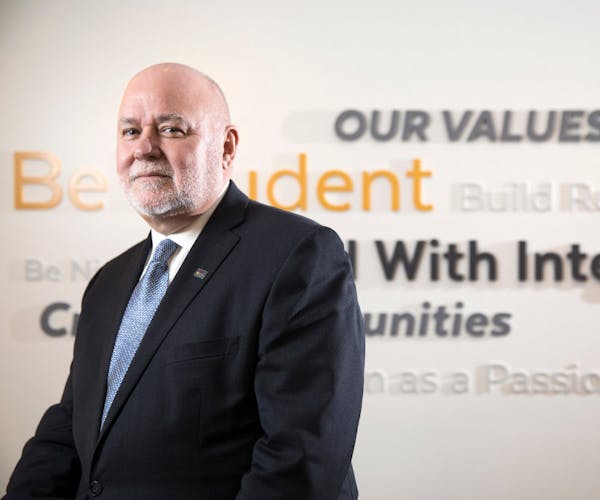It was surprising to hear on the conference call for investors after Monday's announcement of a merger of TCF Financial Corp. and a comparable banking company in Michigan that neither company's executives decided to model out any "revenue synergy."
That's not a very elegant term, but it's a real thing that comes up all the time in mergers, as managers try to figure out what additional revenue would come to a combined and theoretically more competitive company that the two companies operating on their own wouldn't get.
Maybe the management teams didn't bother working on this spreadsheet because the plan for merging the companies, TCF and Chemical Financial Corp., works great without any ginned up revenue-growth numbers.
But maybe an even better explanation is that the leadership of both companies long ago realized how hard it is to get revenue growth in banking. What really matters now is cutting costs and becoming efficient enough to hang around as the industry consolidates.
The deal is being described as a merger of equals, with the TCF holding company merging into Michigan-based Chemical Financial but keeping the TCF name. Seats on the board are split evenly, too, although TCF shareholders will end up with about 54 percent ownership in the combined company. The company's formal headquarters will be Detroit, but TCF CEO Craig Dahl will be in charge of the combined company. He lives in suburban St. Paul and appears to have no plans to move, so he will be working out of both Michigan and Minnesota.
As outlined this week, though, this merger of equals is a much better deal for shareholders of Wayzata-based TCF, with an expected boost in reported earnings-per-share of 31 percent vs. about 17 percent for the shareholders of Chemical. As to how those earnings gains are coming, it's all about efficiency and cutting costs.
There's no way investors missed that point. One number in the presentation for investors that stands out is $1.3 billion, the upfront value to shareholders of the after-tax cost savings to come once the companies combine. That's equal to about 20 percent of the combined value of the two companies in the stock market.
The two companies expect about $180 million in annual expense reductions, about 13 percent of the combined expenses of the two companies in 2019. Much of that will be realized in the first year after the deal closes, which isn't expected until much later this year. That doesn't include about $325 million in merger-related restructuring expenses, including severance and other costs for shrinking the combined staff.
Because the two companies have relatively few branches right next to each other in the combined network of more than 500 offices, only about 15 percent of the $180 million in cost savings will come from retail banking. Instead, a bit more than a third of the cost savings will come from combining two administrative organizations into one, while an equal amount of the savings will come from gaining a lot more efficiency out of information technology spending.
The executives who announced this deal have not come up with a unique insight, by the way, as the banking industry appears to be buzzing with talk of consolidation and mergers as banks try to keep up with bigger banks and emerging nonbank competitors. A list of companies trying to take over some part of what banks do includes companies you have heard of, like T-Mobile, and lots that may be new to you, like the personal-savings company Acorns.
In an approving research note on the TCF and Chemical deal, RBC Capital Markets analyst Jon Arfstrom noted that trying to grow and get some of the benefits of scale by buying a bunch of smaller banks would be much more expensive than doing it in one merger.
Yet even the post-merger, much-bigger TCF won't exactly be a big player. It will only be the ninth-biggest bank in the Midwest when ranked by deposits, and at about a 2 percent share of the market it will still be miles behind the likes of U.S. Bancorp, Wells Fargo & Co. and JPMorgan Chase & Co.
U.S. Bancorp in Minneapolis is about 10 times bigger than the new TCF, but even U.S. Bancorp is not quite one of the industry giants. It's often called the biggest of the super regionals.
But as a way to understand what a company the size of U.S. Bancorp can afford to spend, last year it booked about $1 billion of expense just for technology and communications.
That's not quite what TCF spent for everything last year, all the costs of doing business including keeping open more than 300 branches and paying every employee's salary and benefits.
A TCF customer won't care that it can't match U.S. Bancorp's technology budget. When he or she opens the TCF Bank app on a smartphone, it has to work.
lee.schafer@startribune.com 612-673-4302

Schafer: What do you really need to retire?

Schafer: How doing business can be a bit more like Christmas morning

Schafer: There won't soon be another opportunity to rethink the I-94 corridor

Schafer: The fruits of Honeywell's long-game dedication to quantum computer now being seen


